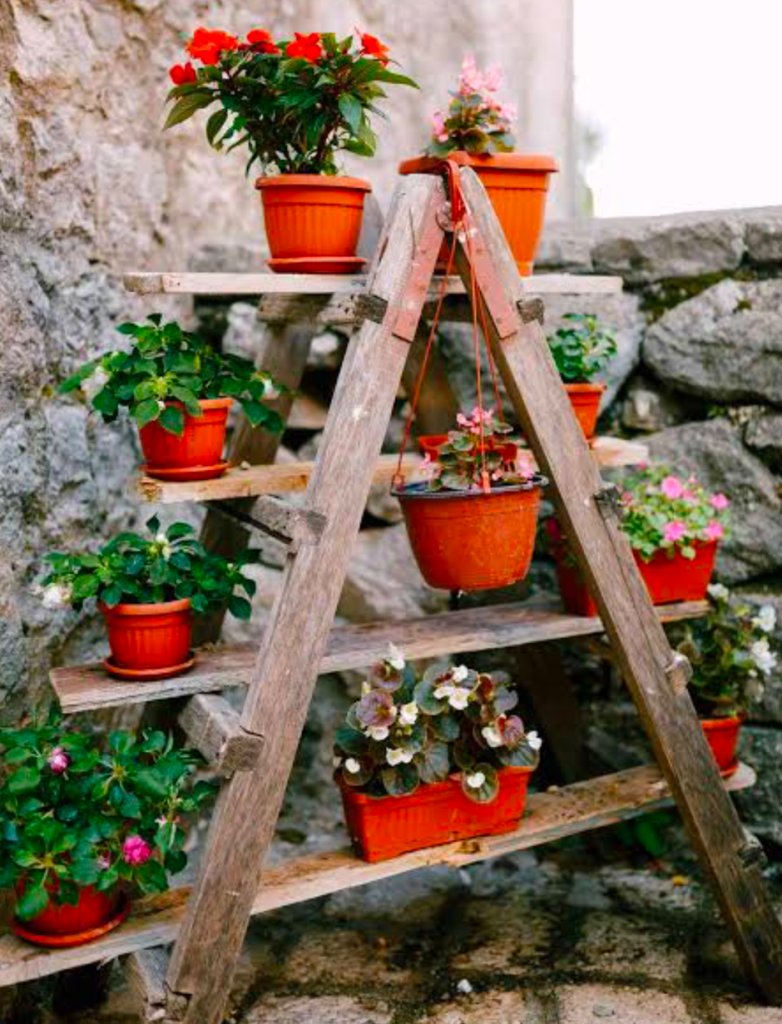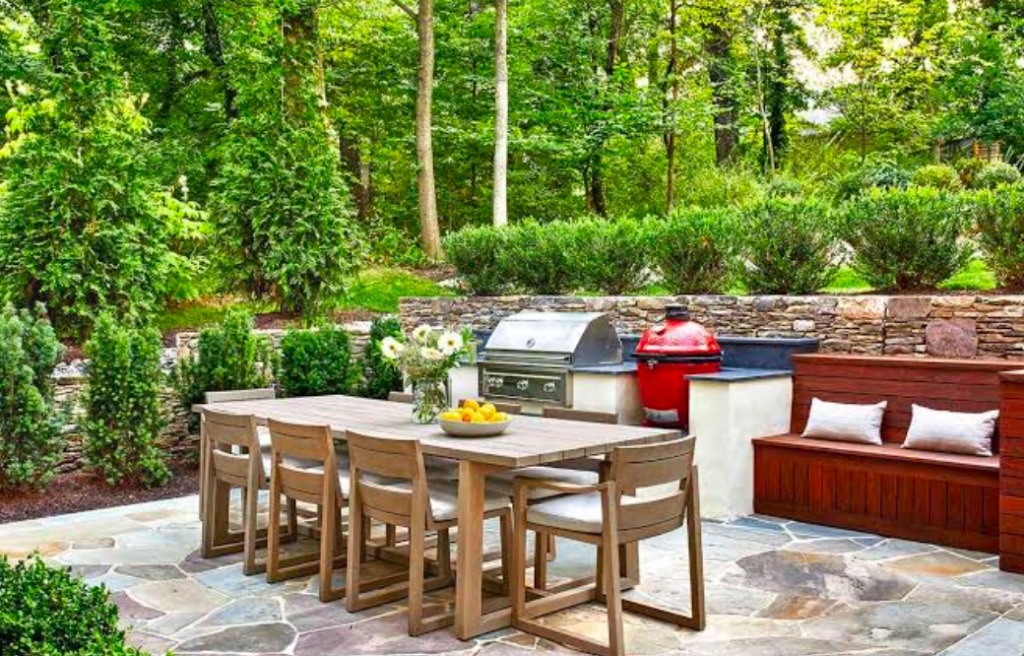A Martha Stewart vegetable garden and chicken coop holds appeal for eco-conscious gardeners who also want to enjoy visually stunning greenery. It’s a design that combines diverse elements to create a unique green-centered garden.
Egg lovers can also add a Martha Stewart chicken coop to outdoor gardens for fresh, organic protein.
Maintaining a garden-to-table lifestyle to improve your quality of life can be challenging.
However, when you personalize each space and activity, it becomes a fun activity you anticipate, and that’s the beauty of urban farming. It only uses traditional rules as a guide but doesn’t follow them. You can add any plant variety to your Martha Stewart-inspired vegetable garden and chicken coop, creating a layout that blends beauty with function.
The Design Principles of a Martha Stewart Vegetable Garden

Even though the Martha Stewart vegetable garden and chicken coop don’t have specific rules, there’s a method for creating their layout. This approach incorporates symmetry, seasonal planting, and an efficient use of garden beds, thereby balancing style and productivity.
Here’s the Martha Stewart method for exploring vegetable garden layout ideas.
Symmetry
Martha Stewart is all about creating stylish, functional gardens with a symmetrical structure, and to achieve this, you need to plan! That’s right, the first principle is to plan your garden layout.
Measure the garden area, note existing elements, and allocate garden zones with proper spacing, height symmetry, and pathways without disturbing the existing structures.
Seasonal Planting
Use seasonal planting plans to maximize yield and reduce the strain on your soil when pulling nutrients. When you plant vegetables in their peak growing season, they produce bountiful, healthy, and juicy fruits and leaves. It also keeps your garden blooming throughout the year.
Garden Bed Usage
Using a garden bed creates a visually stunning display, especially when planting to engage all the senses. You can group your vegetables by variety in different beds and add tall plants for shade.
Consistent Maintenance
Keep your garden thriving with meticulous care. Incorporate seasonal maintenance so that the weather aids your vegetables’ growth instead of working against them.
Urban Farming Techniques Inspired by Martha Stewart
If you have a small space, you can use Martha Stewart-inspired urban farming techniques to spruce up your garden.
Raised Beds

You’ll see a lot of raised beds in city garden inspiration blogs, including Martha Stewart’s own. They’re perfect for soil control, deep watering with better drainage, longer growing seasons through controlled temperatures, fewer compactions, and a beautiful display.
Vertical Growing

Martha recommends vertical garden tips to maximize your garden space.
- Use wall planters
- Mount small potted plants on vertical ladders
- Use hanging baskets for creepers
Container Gardens

Container vegetable gardening helps you manage your planting schedule better. Find a suitable container, add the correct soil mix, bury the seeds, place the container under adequate lighting, and water it appropriately.
Finally, don’t cram too many things in your small space to the point where there’s no room for movement. Now, let’s design your Martha Stewart-inspired chicken coop.
Key Features of a Martha Stewart Chicken Coop

Martha says you could make your chicken coop from scratch or use a pre-made kit, depending on your taste for DIY craft.
Whichever style you choose, here’s a practical guide for building a Martha Stewart chicken coop that’s aesthetically pleasing and functional for backyard poultry.
Materials

Measure the area you intend to use for your poultry to know how much space is available. Get sturdy materials like strong wood to keep your chickens safe, while design add-ons make them comfortable.
Design

You can create a comfortable and stylish poultry housing by using personal and practical features. Professional coop designers shared these practical and stylish backyard chicken coop ideas with Martha.
- Get an all-in-one pre-made coop for a large poultry
- Place curtains over your poultry coop to keep your chickens warm during cold seasons
- Add a breezy window to keep the coop airy during the warm seasons
- Add a litter shelf for the chickens’ droppings when they roost
You can choose a coop design inspiration from any of these professional recommendations or use them all. Now, let’s see how you can harvest your garden yields and pick the best organic eggs for the healthiest meals.
Explain the Garden-to-Table Concept in a Martha Stewart Setting

A garden-to-table lifestyle is one where you cook food grown in your garden.
To create a seamless garden-to-table experience from harvesting fresh produce to preparing meals and enjoying them in an open dining area, here are some Martha Stewart-style backyard dining ideas.
Indoor-Outdoor Kitchen Station

Design your backyard layout to accommodate an outdoor kitchen connected to the garden and your building. Or place your kitchen in the back of the house, close to your garden, with an open plan or sliding double door.
Harvest
Build a personal connection with your garden by lovingly and carefully harvesting its produce. Wait until the fruits are ripe and the leaves are green before cutting them at the stem base, then place your yield in a clean basket.
Meal Prep and Storage

Embrace seasonal recipes and local ingredients for rich flavors and easy access. Get fresh produce recipes and prepare a meal plan so that you can properly store produce that isn’t in immediate use.
Put your greens in chillers and fruits in a separate tray to avoid overripening and oxidation.
Outdoor Dining
Set up an outdoor dining area to complete your garden-to-table experience. You can build a deck in your backyard or incorporate a dining area into your garden layout.
Martha Stewart’s farm-to-fork inspiration encourages simplicity and hospitality in your design. Layer your table with linens and add placeholders for a homely look.
Seasonal Planting & Crop Rotation Practices
Incorporate seasonal planting and crop rotation into your vegetable garden planning.
A seasonal planting schedule not only keeps your garden busy throughout the year but also enhances the growth and flavor of your vegetables. For a good seasonal schedule, you must follow a basic crop rotation guide.
Crop rotation maintains soil health by infusing back into the ground and allowing recovery after peak growing season.
These sustainable garden practices also boost overall productivity in your Martha Stewart-inspired vegetable garden.
Decorative & Functional Garden Features

Let’s add some finishing touches with some Martha Stewart-inspired decorative garden elements.
- Add trellises as vertical support for crawling plants and small gardens
- Install pathways for easy movement within the garden.
- Add some rustic garden accessories, such as fairy lights, lamps, and wooden placeholders, for a camp-style charm.
There are many trellis and pathway ideas to explore, depending on the size of your garden. For small gardens, use wire trellises, whereas gateway trellises fit larger spaces.
Remember, we’re making a stylish and functional garden design.
Conclusion: Martha Stewart Vegetable Garden Blends Beauty and Productivity
Integrating a Martha Stewart vegetable garden with urban farming, stylish chicken coops, and a garden-to-table lifestyle creates a space that is both charming and practical.
You can achieve this upgrade by following the basic principle of the Martha Stewart chicken coop and vegetable garden design style. Aim for symmetry by incorporating seasonal planting schedules, utilizing garden beds, and ensuring consistent maintenance.
Use urban farming techniques to elevate your garden-to-table lifestyle experience and enhance your overall quality of life, just like Martha Stewart.


